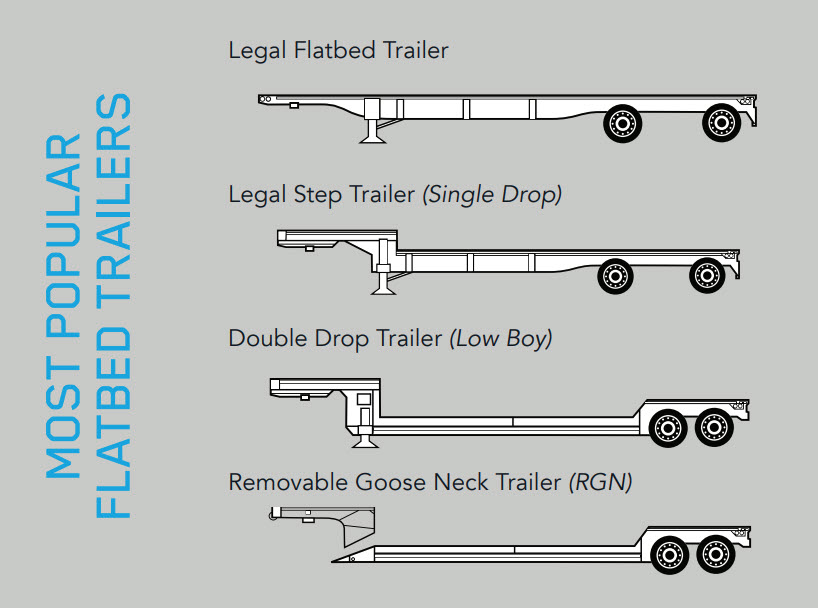Flatbed shipping definition
Flatbed shipping is for the transportation of cargo that may not require the enclosure of a dry van, cannot be loaded or unloaded from a dock, or does not fit within the dimensions of standard truck trailers. A flatbed’s design allows for cranes and forklifts to load goods from all angles.
Benefits of flatbed shipping
- Flatbed shipping provides some dimensional flexibility for large freight since there are no physical walls.
- Where dry van trailers are loaded from the rear, flatbed trucks can be loaded from either side, as well as from the top and back.
- Flatbed equipment includes step decks, double drops and RGNs
Understanding flatbed equipment

There are several types of flatbed trailers used for transporting various types of cargo. Some of the most common flatbed types include:
- Standard (Legal) Flatbed Trailer: This is the most basic type of flatbed trailer with a flat, open deck and no sides or roof. It is suitable for carrying a wide range of general freight and oversized loads.
- Legal Step Deck Trailer (Drop Deck Trailer): This type of trailer has a lower deck height in the front section and a higher deck height in the rear. It allows for the transportation of taller cargo while still accommodating loads that cannot be transported on a standard flatbed.
- Removable Gooseneck (RGN) Trailer: This type of trailer has a detachable front end that allows for easy loading and unloading of heavy equipment. It is commonly used for hauling oversized and overweight loads.
- Double Drop Trailer (Lowboy): Also known as a "double drop deck" or "lowboy," this trailer features a lower deck in the front and rear sections, with a higher deck in the middle. It offers increased clearance for taller cargo in the middle section.
- Curtain Side Flatbed Trailer: Unlike traditional flatbeds, curtain side trailers have retractable curtains on the sides. These curtains can be opened to facilitate loading and unloading from the sides, providing easier access to the cargo.
These are just a few examples of the various types of flatbed trailers. The choice of trailer depends on the specific requirements of the cargo being transported, including its dimensions, weight, and handling needs.
Flatbed shipping tips
- Be knowledgeable about your freight: When booking a flatbed shipment, be sure to understand all the particulars of your shipment, including the commodities being shipped, the value, dimensions and weight. If your flatbed shipment is hauling uniquely shaped or heavy freight, then securing, loading, and unloading it might be more physically taxing. This is particularly critical if your freight is pushing the length, height, or weight limits of the flatbed trailer.
- Understand the trailers: Familiarize yourself with the equipment before you book a shipment to make the most cost-effective and safe choices. Extended trailers and conestogas can be harder to find and your freight service provider may need advanced notice when they are required.
- Work with professionals: Think about working with an expert that can help secure capacity and locate the equipment needed to move your freight. It will certainly make shipping a lighter load for you.


